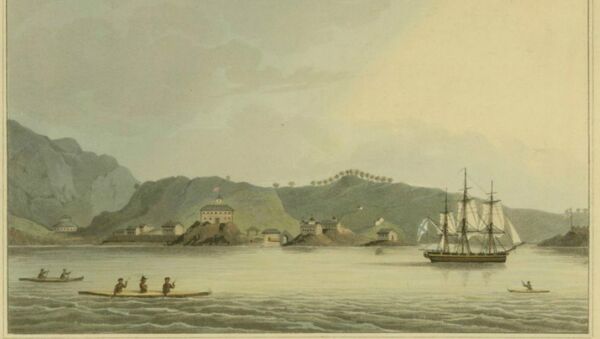The Neva left Russia's Siberian port of Okhotsk with a crew of 75 sailors, as well as cargo including guns and fur in August 1812, to begin the journey to Alaska on behalf of the Russian-American Company.
The Neva was a three-masted 61 meter vessel, built in London and bought by Russia in 1802. It was already famous prior to its final voyage as one of two Russian ships that were the country's first to circumnavigate the globe, from 1803-1807.
From the original crew which left Okhotsk, 15 people had already died at sea before the shipwreck, which killed 32 sailors.
Of the 28 sailors who made it to shore, 26 managed to survive the harsh Alaska winter before they were rescued a month later. However, little has been documented about how they managed to survive the shipwreck, and its aftermath, with many accounts based on oral history and folklore.
In 2012, archaeologists discovered a collection of Russian axes at an excavation site near Sitka, and in July this year the international team of experts from the US, Russia and Canada returned to find more artifacts, in the belief that the site is the place where the shipwreck survivors set up camp.
#Archaeologists piece together how crew survived 1813 shipwreck in #Alaska: http://t.co/YbGSpgbFEQ #NSFfunded pic.twitter.com/d8CgqywQQw
— National Science Fdn (@NSF) 9 сентября 2015
"The items left behind by survivors provide a unique snapshot-in-time for January 1813, and might help us to understand the adaptations that allowed them to await rescue in a frigid, unfamiliar environment for almost a month," said Dave McMahan of the Sitka Historical Society, the principal investigator on the project.
The artifacts include a series of hearths as well as gun flints, musket balls, pieces of modified sheet copper, iron and copper spikes, an axe, and a fishhook made from copper.
The researchers suggest that the sheet copper may have been from the Neva's shipwrecked hull, while small flakes of flint suggested the gun flints were used as strikers to start a fire.

By piecing together the evidence, the scientists have been able to shed light on how this group of sailors managed to tough out a month after being washed up on shore with no food or shelter to hand.
"In one of the translated survivor accounts it talks about being able to make it to shore with a pistol and using the flint to start a fire, so it sort of fits with that," explained McMahon, whose team intends to return to the site next year and continue the investigation, in order to unearth more of the crew's secrets, and replace more of the folklore surrounding the ship's tale with archaeological discovery.






